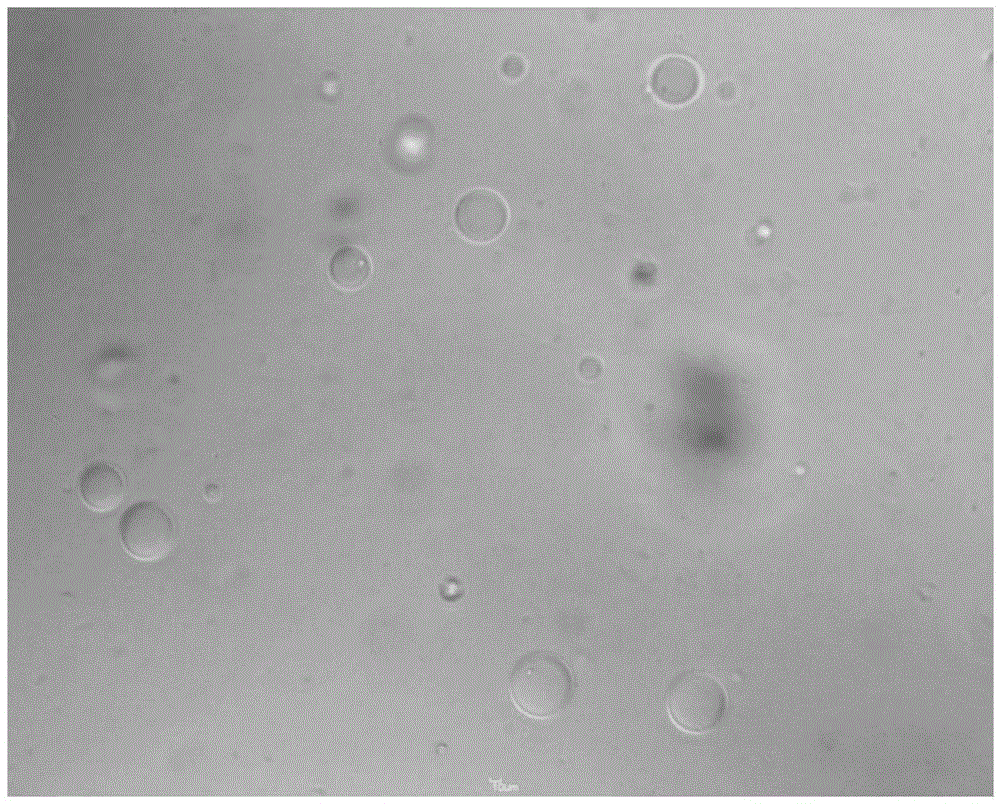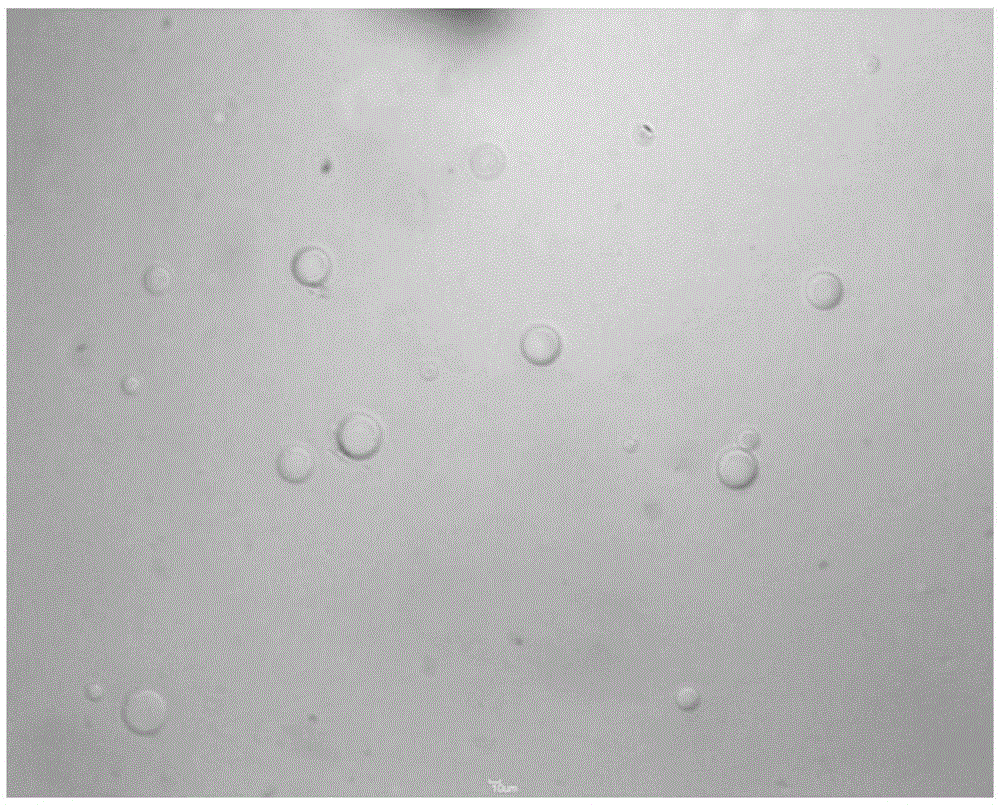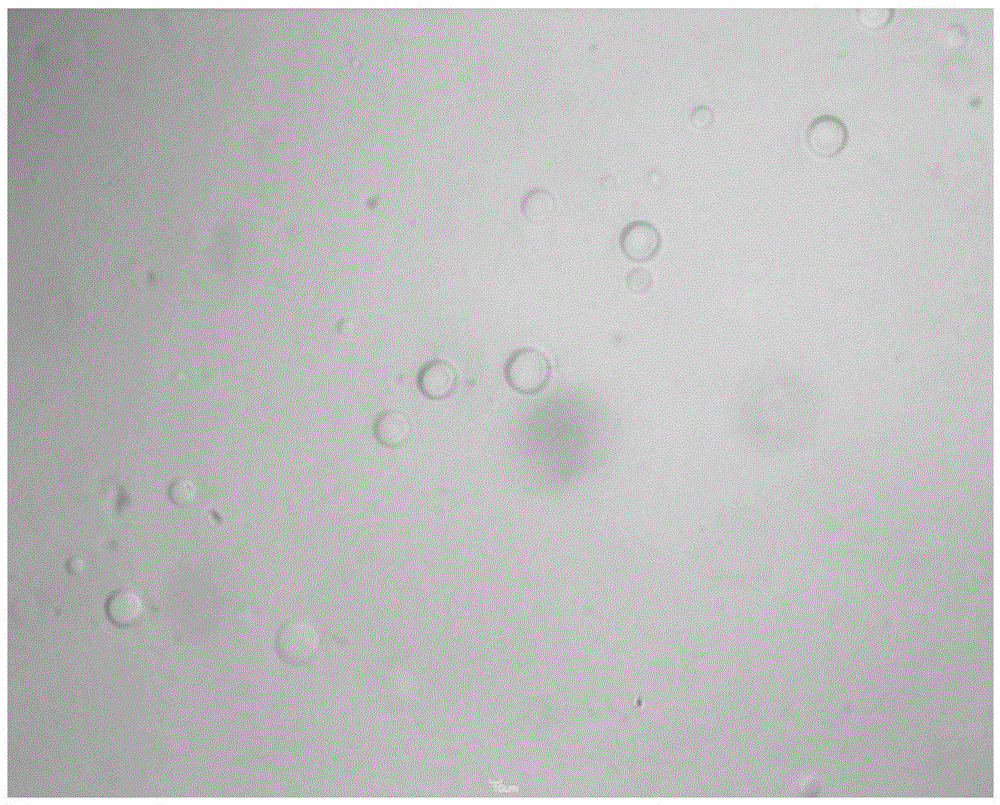Extraction method of halogeton mesophyll cell vacuoles
An extraction method and technology of halophyte, applied in the direction of plant cells, etc., to achieve the effects of high efficiency, rapid integrity, large quantity and high purity
- Summary
- Abstract
- Description
- Claims
- Application Information
AI Technical Summary
Problems solved by technology
Method used
Image
Examples
Embodiment 1
[0025] Embodiment 1: a kind of method for extracting cell vacuoles of Herba salina leaf, its steps are:
[0026] (1) Leaf sampling: cut and grow 30d seedling leaves, wash 3 times with distilled water, and dry the surface with filter paper;
[0027] (2) Enzymatic hydrolysis and purification of protoplasts: the leaves obtained in step (1) were cut off from the stalks along the base of the leaves, moved to a laboratory table covered with smooth and clean paper, and cut in half along the main veins of the leaves with a blade. Then put in the enzymatic hydrolysis solution, and enzymolyze it for 2.5 hours at a temperature of 25°C in the dark; after the enzymolysis is completed, add an equal volume of washing solution to the enzymatic hydrolysis solution, and place it in dark conditions at a temperature of 6°C and a rotation speed of 30rpm Shake on a shaker for 10 minutes to release the protoplasts; then use a 5ml pipette to transfer all the enzymolysis solution to a test tube, centr...
Embodiment 2
[0033] Embodiment 2: a kind of method for extracting cell vacuoles of Herba salina leaf, its steps are:
[0034] (1) leaf drawing: cut out the leaves of 40d seedlings, wash them with distilled water for 5 times, and dry their surfaces with filter paper;
[0035] (2) Protoplast acquisition and purification. Cut the leaves longitudinally along the main veins with a razor blade, then enzymatically hydrolyze at 22°C for 2.5 hours in the dark, then add an equal volume of washing solution, then shake on a shaker at 6°C and 35rpm for 10 minutes in the dark, Then use a 5ml pipette gun to transfer the enzymolysis solution into a 10ml test tube, then centrifuge at 5°C and 2200rpm for 10min, and use a pipette gun to draw 4ml of the supernatant;
[0036] (3) Acquisition and purification of vacuoles. Add 30ul / ml digitonin to the above supernatant, mix well, let stand at 4°C for 10min, centrifuge at 1200rpm at 4°C for 15min, finally collect 2ml of supernatant, and observe it under an inve...
Embodiment 3
[0037]Embodiment 3: a kind of method for extracting cell vacuoles of Herba salinae blade, its steps are:
[0038] (1) Leaf sampling: cut and grow 25d seedling leaves, rinse 3 times with distilled water, and dry the surface with filter paper;
[0039] (2) Protoplast acquisition and purification. Cut the leaves longitudinally along the main veins with a razor blade, then enzymatically hydrolyze at 25°C for 3.0 hours in the dark, then add an equal volume of washing solution, then shake at 2°C at 40 rpm for 15 minutes in the dark, Then use a 5ml pipette gun to transfer the enzymolysis solution into a 10ml test tube, then centrifuge at 4°C and 2200rpm for 10min, and use a pipette gun to draw 4ml of the supernatant;
[0040] (3) Acquisition and purification of vacuoles. Add 35ul / ml digitonin to the above supernatant, mix well, let stand at 2°C for 15min, centrifuge at 1100rpm at 2°C for 10min, finally collect 2ml of supernatant, and observe it under an inverted microscope. The pr...
PUM
 Login to View More
Login to View More Abstract
Description
Claims
Application Information
 Login to View More
Login to View More - R&D
- Intellectual Property
- Life Sciences
- Materials
- Tech Scout
- Unparalleled Data Quality
- Higher Quality Content
- 60% Fewer Hallucinations
Browse by: Latest US Patents, China's latest patents, Technical Efficacy Thesaurus, Application Domain, Technology Topic, Popular Technical Reports.
© 2025 PatSnap. All rights reserved.Legal|Privacy policy|Modern Slavery Act Transparency Statement|Sitemap|About US| Contact US: help@patsnap.com



